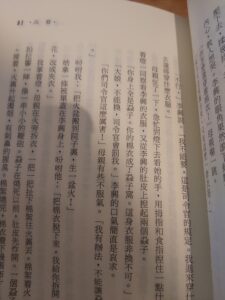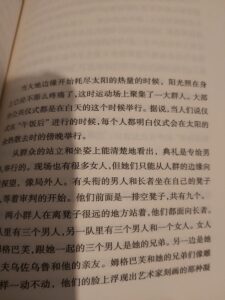In the past there were no concepts of Simplified and Traditional Chinese. Up until about 1950, there was only one form of written Chinese. We now call that form “Traditional Chinese”. You can still find it in any books published anywhere in China before 1950, as well as in Hong Kong, Singapore, Malaysia, Taiwan, and overseas Chinese communities established before 1950.
In the 1950’s, the government of the People’s Republic of China decided to improve the literacy rate, which was very low in China at that time. One of the measures adopted was to simplify many of the characters to make them easier to learn and write. The resulting set of new characters is what we now call “Simplified Chinese”. Generally Simplified Chinese is found throughout mainland China, and in newer overseas Chinese communities.

Can we convert between Simplified and Traditional Chinese?
It is possible to convert simplified to traditional Chinese, but there may be some problems. For example, the traditional Chinese characters for “dormitory” (“舍” – pronounced “shè”) and for “abandon” (“捨” – pronounced “shě”) are written differently, but look quite similar and sound quite similar. When simplified Chinese characters were created, they changed the character for “abandon” so that it became the same as the character for dormitory, but the pronunciation remained different. So now when you see “舍” in simplified characters, it could either mean “dormitory” or “abandon”. Automated software converting from simplified to traditional will usually not know the context and may convert the character wrongly, although some sources claim that AI is beginning to look at context and overcomes these problems. There are a handful of examples like that. A good translator will have a good sense of where to check for errors in this type of conversion.
Can we convert Traditional to Simplified Chinese?

This is much easier than going the other way, as we are removing complexity rather than adding it. However, users should use conversion software with an abundance of caution. For quick online conversions of a sentence or two I personally use the app Chinese Tools Convertor. Generally I would recommend at least a thorough read-through of the converted results, if not a full review.
Should I learn Traditional or Simplified Chinese?
It depends on what you are planning to do. From a purely linguistic perspective, I learned them in the wrong order. It’s easier to learn Traditional first then learn how to simplify down to simplified Chinese characters. I did the opposite and learned simplified first. When I first arrived in Taipei, I was already fluent in simplified Chinese but I found I could hardly read anything. It took about 18 months to get a sense of the traditional characters, and now I would say I am fluent in both. Going the other direction would probably have taken half the time or less. However, practical reasons such as where you will be visiting should normally take precedence over linguistic reasons.
Another aspect I found interesting when I learned traditional Chinese characters was that, since the characters were more complex, they had the space to convey more cultural information. A simple example is the word “love”. The traditional Chinese character for love includes a heart towards the top, whereas this was removed for the simplified version. The heart was taken away from love.
There’s no Heart in Love Anymore
Depending on complexity, Chinese characters can be made of several different parts. The Traditional Chinese character for “love” (pronounced ai4) is:
愛
Note the little heart “心” character you can see just under the top four strokes.
Now look at the Simplified Chinese character:
爱
The character for “heart” has been taken out of the simplified version. It certainly makes it easier, but somehow it’s sad that the heart has been taken out of so many lovely characters.
There are a couple of nuances when it comes to Chinese Numbers. See my article on that for some more information.
Other Considerations
There are numerous online tools which can convert between simplified and traditional Chinese. I don’t particularly recommend one over any other, but I would say to use them all with care. If you buy a dictionary I would check it shows both, and certainly if you have a translation project, you need to make sure at the outset which version of Chinese you are working with.